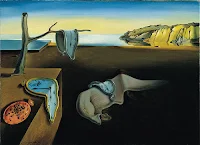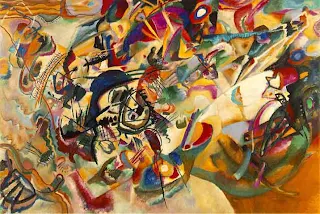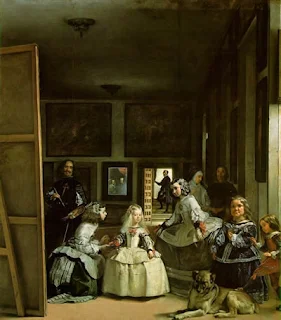 |
| The Starry Night, June 1889, The Museum of Modern Art, New York |
Question: Could you list most important Western European paintings you feel American students should be able to recognize by the time they graduate from high school?
Answer: This is the sort of request that is, of course, impossible to answer absolutely. Not only is it a question of taste, but also the answer would be different given the location and cultural history of the students who are being taught the material. Personally, I believe that young people should become most familiar with art that is both local and relevant to their own culture. However, I will include here a listing of those artworks painted by Western Europeans that young students in the United States should be able to identify by the time they graduate from any high school. This listing is influenced by the number of lesson plans that I have read over the years, the art history classes that I have attended in college, and also upon my own tastes.
 |
| Marc Chagall's painted the ceiling of the Paris Opera house in 1963. |
The listing is not random; I believe that most young scholars should be familiar with the paintings I have included here in order to claim that they have some descent exposure to the "appreciation" of the fine arts. All the paintings are world renowned. Countless scholars have written praises for these artworks and have agreed that their creators are some of the finest painters who have ever lived. Some of my choices are not only based upon exquisite technique but upon the importance of ideas represented in the artwork that are historically important.
If and when students should ever attend art appreciation in college or even general western art history courses, they will be expected to identify these paintings, the artists who created them and most probably the museum collection or building where the artworks may be viewed.
The paintings are not listed in any particular order and I will probably continue to add to the listing over time.
The paintings are not listed in any particular order and I will probably continue to add to the listing over time.
 |
| Guernica, 1937, Museo Reina Sofia |
 |
| "Primavera" also known as the Allegory of Spring by Sandro Botticelli. The painting hangs in the Uffizi Museum of Florence. |
 |
| Where Do We Come From? What Are We? Where Are We Going?, 1897, Boston Museum of Fine Arts, Boston, MA, USA |
 |
| Rain, Steam and Speed - The Great Western Railway painted (1844) by Joseph Mallord William Turner. |
 |
| Ophelia (1852) Tate Britain, London by John Everett Millais |
 |
| The Sunday Afternoon on the Island of La Grande Jatte, 1884–1886, at The Art Institute of Chicago, depicting petite bourgeoise and prostitutes on the right bank of the river is by Georges Seurat |
 |
Water Lilies, 1906, Art Institute of
Chicago is by Claude Monet. |
 |
| The Persistence of Memory by Salvador Dali hangs in The Museum of Modern Art, New York City |
 |
| The Sistine Chapel's ceiling was painted by Michelangelo. This particular scene is of "The Last Judgement." |
 |
| "The Scream" by Edvard Munch hangs in The National Gallery of Oslo |
 |
| "St. George and The Dragon" by Peter Paul Rubens |
 |
| Composition VII by Wassily Kadinsky |
 |
| Open Window, Collioure, by Henri Matisse, 1905, National Gallery of Art, Washington, DC. |
 |
| Las Meninas by Diego Velázquez |
 |
| Natalia Goncharova’s Cyclist, 1913 |




No comments:
Post a Comment